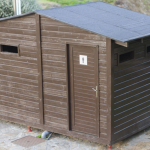Your Guide to CDL Classes
Trucks move over two-thirds of the United States freight by weight. That’s nearly 11 billion tons! And it’s primarily thanks to the 3.49 million U.S. truckers with a commercial driver’s license (CDL).
Unfortunately, there’s still a shortage of truck drivers. In 2021, the industry was short 80,000 drivers. That could double by 2030.
So if you’ve always wanted to become a trucker, now’s the best time to learn about CDL classes. Qualify for one or more of these, and your skills will be in demand.
This guide discusses the three types of CDL, so read on.
Class A CDL
With a Class A CDL, you can operate a combination of vehicles with a total gross weight of 26,001 pounds or more. It also enables you to drive trucks with a towing capacity of over 10,000 pounds.
A Class A CDL allows you to operate a vehicle with a trailer or a semi-trailer with at least two axles. These include the following:
- Tractor-trailers and flatbeds
- Tractor-trailer buses
- Semi-trucks with flatbed trailers
- Tank vehicles
- Livestock carriers
- Truck and trailer combinations
You can also drive Class B and C commercial vehicles with the proper Class A CDL endorsements.
Endorsements are CDL designations indicating your qualifications to operate specific vehicles. Likewise, they allow you to transport specific types of cargo or loads. The more of these you have, the more job opportunities you can have as a CDL driver.
Class B CDL
Like a Class A CDL, a Class B CDL lets you operate a vehicle with a gross weight of at least 26,0001 pounds.
However, you can only drive a single vehicle, not a combination one with a Class B CDL. Moreover, the vehicle’s towing capacity can’t exceed 10,000 pounds.
With the proper endorsements, a Class B CDL lets you operate the following:
- City and tourist passenger buses
- School buses
- Segmented buses
- Box, delivery, dump, garbage, or straight trucks
- Cement mixers
If you have the correct Class B endorsements, you can use them to drive Class C vehicles. First, however, you must complete and pass the Entry-Level Driver Training (ELDT). This requirement applies to first-time Class A CDL applicants, too.
The good news is that training providers offer ELDT courses bundled with endorsements. These include passenger, HazMat, and school bus endorsements. Check out these classes and consider enrolling in them to maximize your training.
Class C CDL
Drivers employed to transport hazardous materials must carry a Class C CDL. They must also have a separate HazMat transportation endorsement.
A Class C CDL is also a requirement for drivers who intend to transport at least 16 occupants. So if you want to become a bus or passenger van driver, you need this CDL class.
Choose From These CDL Classes
Remember: Class A provides the most job opportunities among the three CDL classes. After all, it allows you to drive even Class B and C vehicles as long as you have the correct endorsements.
So if you’re considering becoming a CDL driver, apply for a Class A CDL from the get-go.
Once you’ve obtained your commercial driver’s license, it’s time to look for work. To help make your application stand out, check out our guide on the top skills employers look for in resumes!













